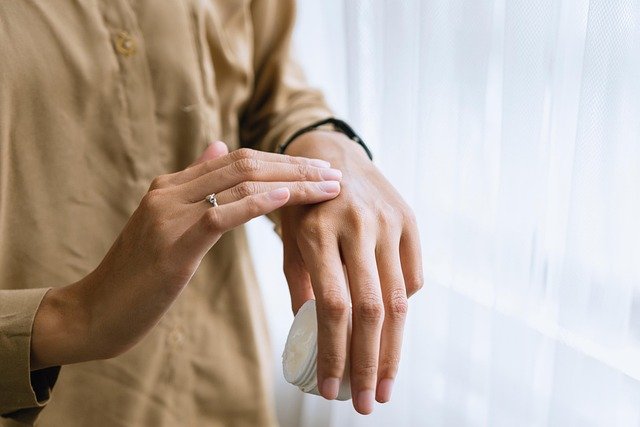Integrating daily skin-friendly movement into a busy schedule
Finding small, skin-friendly ways to move each day can support appearance and overall wellbeing even when time is scarce. Short, consistent sessions that promote circulation, posture, and gentle toning pair well with hydration and nutrition strategies to help skin resilience. This brief overview highlights practical, evidence-aligned methods to weave movement into a busy routine without heavy equipment or long commitments.

Many people juggling work, family, and errands still want practical ways to support skin health while staying active. Integrating movement that favors circulation, posture, and gentle toning does not require hours at the gym. Short walks, micro-break mobility flows, and posture-focused exercises can complement topical skincare and hydration habits to support tissue health and resilience. Below are structured approaches and simple examples you can adapt to daily time constraints.
This article is for informational purposes only and should not be considered medical advice. Please consult a qualified healthcare professional for personalized guidance and treatment.
How does movement support skincare and circulation?
Movement influences skin-supporting systems mainly by improving circulation and lymphatic flow. Increased blood flow delivers oxygen and nutrients to the skin while activity-driven lymphatic pumping can help clear metabolic byproducts. Sweating during moderate activity can also temporarily alter skin surface conditions; gentle rinsing afterward helps maintain barrier function. Regular low-impact activity supports overall metabolic health, which indirectly affects collagen integrity and resilience. Simple practices that boost circulation without irritating skin are preferable, especially for sensitive or acne-prone skin.
What routine movements fit a busy schedule?
Micro-routines are effective when time is limited: five to ten minute movement bursts spread across the day can add up. Try a morning mobility brief, a mid-day brisk 10-minute walk, and a short evening stretching sequence. Desk-friendly options—seated leg lifts, shoulder rolls, and standing calf raises—help maintain circulation and posture. Consistency matters more than intensity for skin benefits tied to circulation and recovery, so aim for repeatable blocks that fit real schedules rather than occasional long sessions.
How do hydration and nutrition affect skin alongside movement?
Movement and nutrition work together: staying hydrated supports circulation and sweat production, while adequate protein and micronutrients support tissue repair and toning. Drinking water before and after activity helps maintain skin turgor and supports metabolic clearance. Diets providing vitamin C, zinc, and omega-3s contribute to collagen synthesis and inflammation management; pairing these with regular movement supports recovery and resilience. Keep in mind individual needs vary; adjust hydration and nutrient intake based on activity level and environmental conditions.
How to build mobility, flexibility, and posture into daily habits?
Focused mobility and flexibility exercises improve range of motion and posture, which can reduce mechanical stress on skin and underlying fascia. Short routines centered on shoulder opener stretches, thoracic rotations, hip flexor releases, and ankle mobility can be performed daily in 8–12 minutes. Posture checks—setting hourly reminders to align head, shoulders, and spine—help reduce tension that can contribute to lines and discomfort. Combine mobility work with breathing exercises to support circulation and relaxation for both skin and systemic recovery.
How to add strength, endurance, and gentle toning safely?
Resistance-based movement supports muscle tone, which provides structural support beneath the skin and contributes to a firmer appearance. Bodyweight moves—squats, lunges, planks, and push variations—can be scaled to short circuits of 10–20 minutes. Endurance activities like brisk walking or cycling for 20–30 minutes several times weekly support cardiovascular health and circulation. Prioritize form and gradual progression to minimize injury risk; balanced strength work also supports posture and long-term resilience of soft tissues.
How to prioritize recovery and resilience after activity?
Recovery practices help preserve skin barrier function and overall tissue health. Gentle cool-downs, brief stretching, and hydration after exercise support metabolic clearance and reduce prolonged inflammation. Adequate sleep and stress-management strategies aid skin repair processes and resilience. For localized irritation or excessive sweating, promptly cleansing and using appropriate emollients can protect barrier integrity. Listen to your body: rest days and lower-intensity sessions are part of building sustainable, skin-friendly movement patterns.
Incorporating skin-friendly movement into a busy life centers on small, repeatable choices: short mobility breaks, consistent hydration, nutrient-focused meals, posture awareness, and balanced strength and endurance work. Over time, these habits can support circulation, recovery, and the structural tone that underlies healthier-looking skin. Tailor intensity and frequency to personal needs and consult healthcare providers for individualized guidance.





